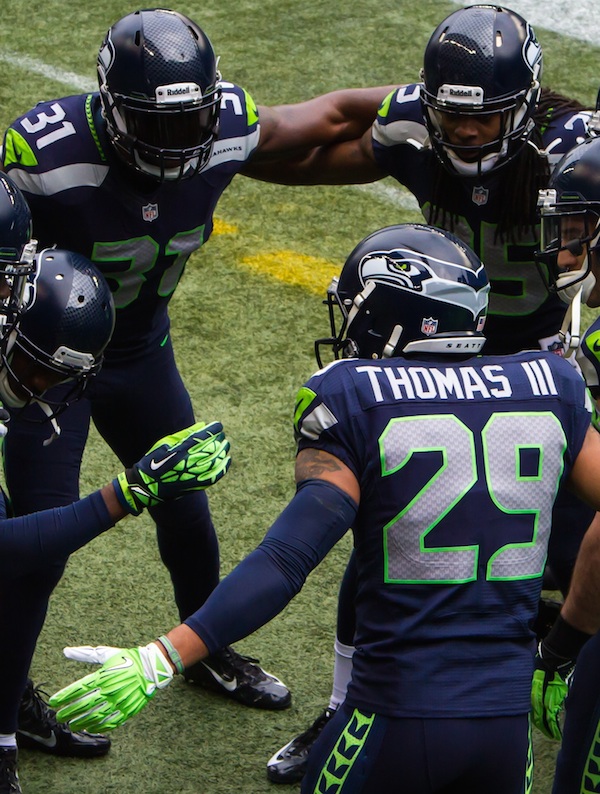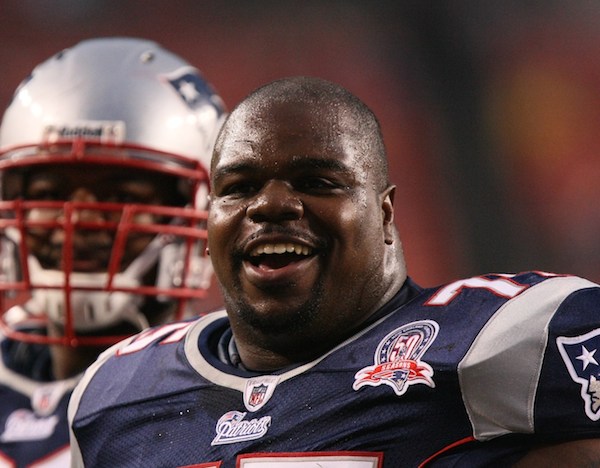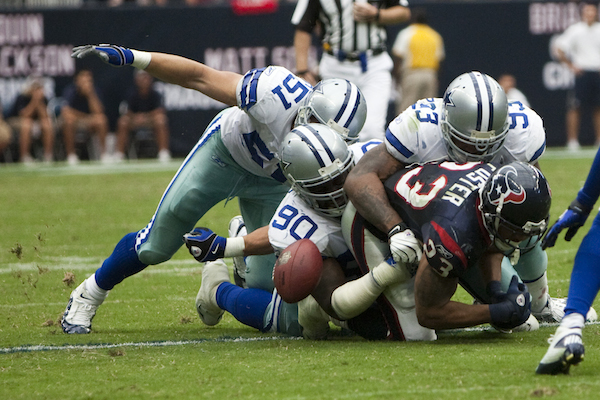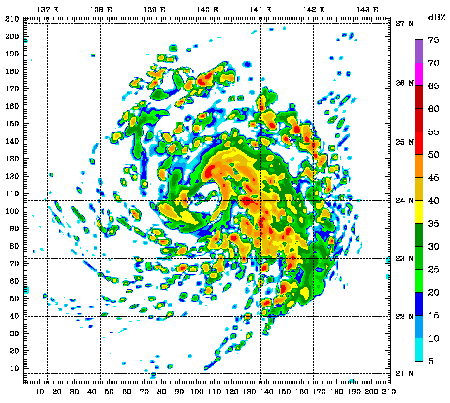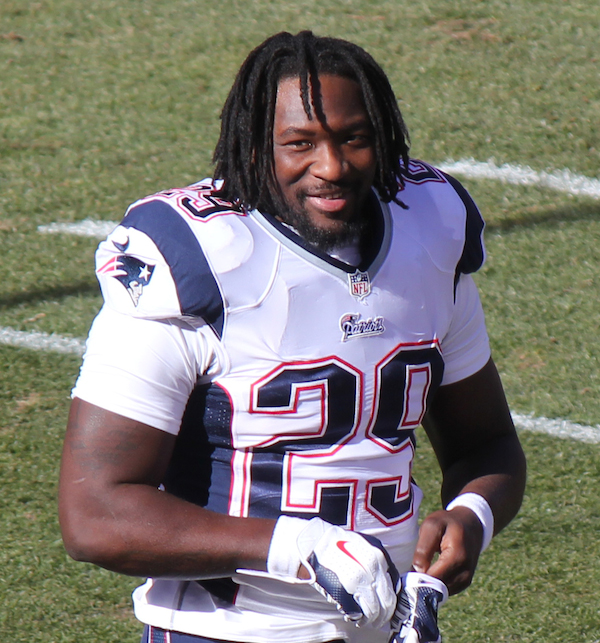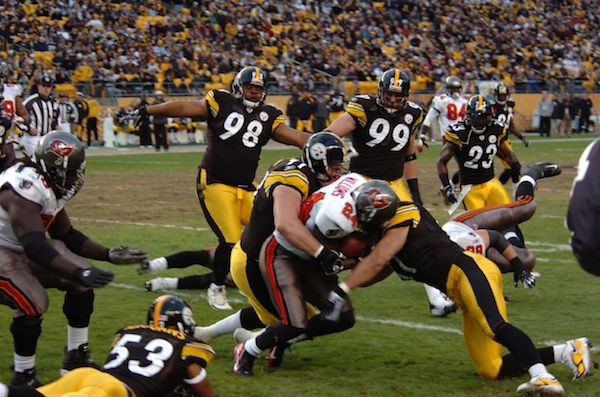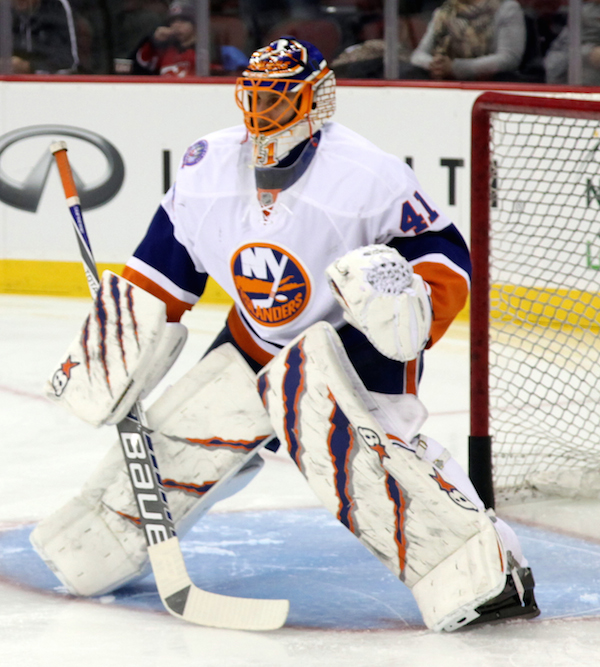In the week leading up to Super Bowl XLIX, we’re profiling the important characters of the game. We’ve already run posts on Seattle’s coach, Pete Carroll, quarterback, Russell Wilson, and the rest of the Seattle Seahawks offense. Now it’s time to learn a little about the Seattle Seahawks defense.
Michael Bennett, Defensive End
I’m a pretty big football fan and I write about sports close to full time but I didn’t know much about Michael Bennett before this year’s playoffs. Now, he’s one of my favorite characters in the league. Bennett was initially signed out of college as a free agent by the Seattle Seahawks in 2009. He was released before ever playing a game and the Tampa Bay Buccaneers signed him. He played there for four years and improved every year. During the offseason before last season, the Seahawks signed him to a one year contract and, after they won the Super Bowl, re-signed him for another four years. He grew up in Texas and has a brother who also plays in the NFL, Martellus Bennett. Martellus has been a well-known jokester for a while now, having given himself the nickname, “The Black Unicorn” in 2013. Michael Bennett has been letting his humorous side show this year too. After the Seahawks win over the Green Bay Packers, Bennett commandeered a police bicycle and rode around the field:
During media day this Tuesday, Bennett had a series of great lines, including comments about his wife’s booty and great beards of history as well as doing imitations of some of his more famous teammates.
Bobby Wagner, Linebacker
The Seahawks defense is full of brash characters who talk as brashly as they play. Wagner is the exception. He’s an undersized, soft-spoken middle linebacker who helps the rest of the defense when they gamble to make a spectacular play by using his speed to cover for them. He’s the defensive signal caller which means his helmet has a green dot on the back, the symbol for a helmet with a radio receiver in it. Wagner gets the defensive play calls from a coach and then relays them to his teammates. Wagner will have his hands full trying to counter Patriots coach Bill Belichick’s offensive creativity. Since Wagner came back from an early season injury, the Seahawks have not lost a game.
Richard Sherman, Cornerback
Richard Sherman is now more famous for being controversial than he is actually controversial. It all started a year ago when the Seahawks beat the San Francisco 49ers and Sherman was interviewed on the field after the game by reporter Erin Andrews. Sherman said that he was the best player at his position (an audacious claim, but he is certainly in the top handful of players and, like a surgeon, don’t you want him to think he’s the best?) and then, in answering a question about the last play of the game, when he cliched the win for the Seahawks with an interception, he said that was the result the other team should expect when they tried to throw the ball to a “sorry receiver” like the one he was covering. Nothing there seems all that controversial but it set off weeks of commentary on Sherman and who or what he represents. What he represents in this game, is an extraordinary defender who will probably be able to prevent whichever wide receiver he’s covering from catching the ball. If Tom Brady is brave enough to challenge him by throwing in Sherman’s direction, watch for Sherman to make a play on the ball and try to catch it himself.
Kam Chancellor, Safety
Let’s let our last character, Richard Sherman describe his teammate Kam Chancellor and his role in the Seahawks defense. This comes from Robert Mays‘ Grantland profile of Chancellor: “He just brings that menacing force,” Sherman says. “We’re a bunch of wild dogs, and a pack of wild dogs is pretty dangerous. But a lion running with a pack of wild dogs … that’s something.” Chancellor’s athletic play has inspired a bunch of nicknames. He’s known as Bam Bam Kam, Kamtrak, and The Commissioner. Chancellor was the guy who kept leaping over the offensive line to try to block a field goal a few weeks ago. In this game, if the Seahawks choose to change their defensive strategy to focus on Patriots Tight End, Rob Gronkowski, Chancellor would likely be the one to get the assignment of taking him out of the game.
Earl Thomas, Safety
Earl Thomas rounds out the Seahawks group of wildly successful defensive misfits. At 5’10”, he’s way too short to be as good at his position as he is. But he is. He was drafted in the first round of the 2010 NFL draft by Seattle and has yet to miss a single game. As opposed to his safety partner, Kam Chancellor, Thomas is more likely to go after interceptions than knock-out hits. Off-the-field, Thomas is a conundrum. Seattle Times columnist, Larry Stone described Thomas as the most “paradoxical” of the Seahawks and commented that “after an interview, you don’t want to shake his hand so much as engage in a group hug.” Thomas separated his shoulder in the Seahawks last game but tweeted recently that his shoulder is completely recovered. In what could not have been a coincidence, the NFL blood tested him soon after the tweet.
Prepare for the Super Bowl with Dear Sports Fan. We will be running special features all week to help everyone from the die-hard football fan to the most casual observer enjoy the game. So far we’ve profiled Seattle Seahawks coach Pete Carroll, New England Patriots coach Bill Belichick, New England Patriots quarterback Tom Brady, Seattle Seahawks quarterback Russell Wilson, the Seattle Seahawks secondary offensive characters, and the New England Patriots defense. If you haven’t signed up for our newsletter or either of our Football 101 or 201 courses, do it today!

